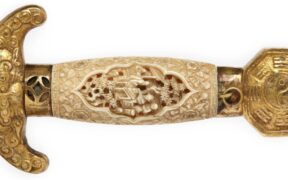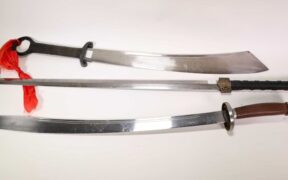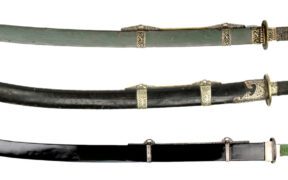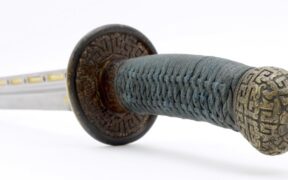Our content features commercial links to our products, committed to transparent, unbiased, and informed editorial recommendations. Learn More
Exploring the Chinese Sword Handle Types and Their Anatomy
NO AI USED This Article has been written and edited by our team with no help of the AI
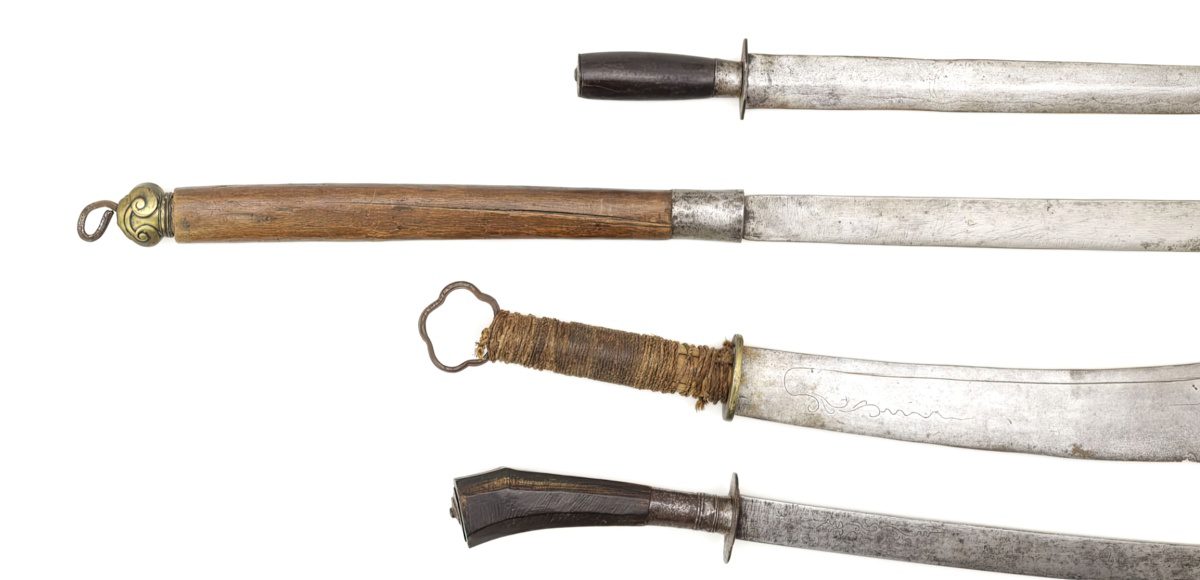
When it comes to bladed weaponry, Chinese swords are among the most impressive in history, being both beautiful to look at and terrifying to anyone unlucky enough to be in their path. The sharp steel blade was undoubtedly responsible for the sword’s devastating force, but the blade itself would be useless without the traditional Chinese sword handle.
Chinese sword handles come in various styles, each of which has its roots in the country’s long battle history. Starting with its anatomy and moving on to the many types, this article will introduce you to the Chinese sword handle.
Anatomy of a Chinese Sword Handle
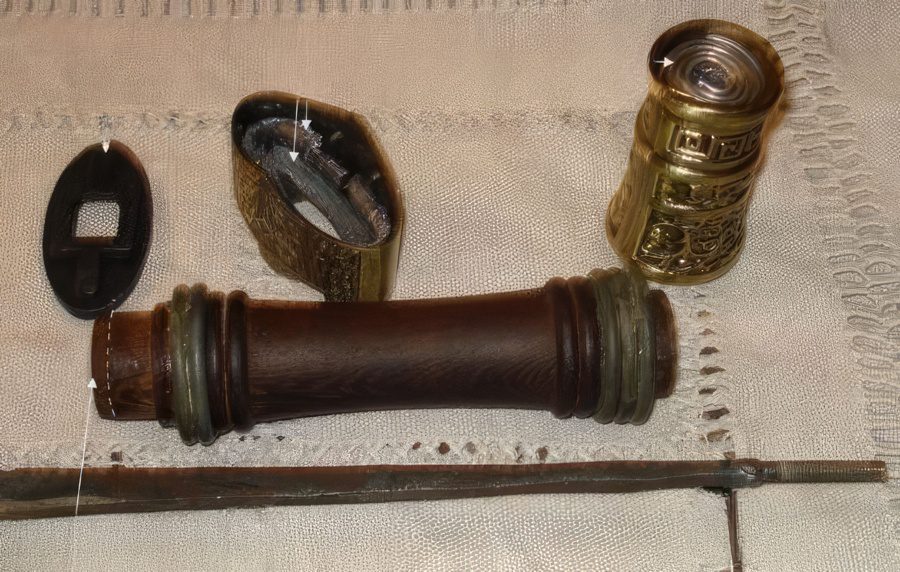
It is generally agreed that there are at least 30 distinct varieties of Chinese swords, each representing a distinct period of development in the art of Chinese swordmaking, which began in antiquity and continued into the twentieth century. The Dao and Jian swords are the two primary categories.

These swords have a full tang blade, either ending in a round and ring pommel or a thin piece of blade that extends to the end. In short, a part of the unsharpened blade is beneath the handle itself.
The two primary types of Chinese sword blades naturally give rise to corresponding handle types. But, throughout time, new distinct types emerged, such as curved or even larger ones, due to the deployment of cavalry forces influenced by northern China with its Steppe peoples.
Dao
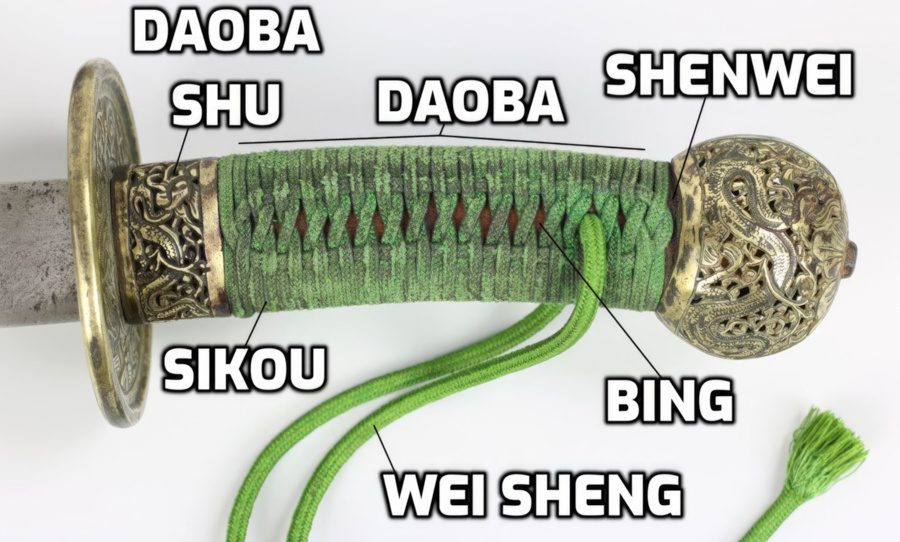
The Dao sword, also known as the Chinese broadsword or the “General of Weapons,” has been used by Chinese warriors for millennia. Originally, the Dao had a straight handle, a tiny guard on the upper side, and a ring pommel. The most common material for handles throughout history has been wood. However, cord wrap or, at times, plain and simple rope, rattan, or braided wraps with leather strips has also been utilized.
Dao single-edged blades gradually develop a small curvature, eventually becoming the primary Chinese curved saber. Some Dao swords from China will retain a straight handle, but the vast majority will be curved to make slashing and slicing with the blade easier and more effective.
Daoba Shu
The ferrule on a Chinese Dao sword is known as the Daoba Shu. It holds the handle together and acts as a rough patch when moving the hands along the handle.
Sikou
The wrap of the Chinese handle is called Sikou. It can be made in many different materials, as mentioned previously. It is usually made into an “x” pattern to be bumpy and provide a better overall sturdier grip.
Daoba
The entirety of the handle is called Daoba on the Dao swords. There are mainly two versions of it regarding length, one-handed and two-handed, and it can be curved or straight.
Shenwei
The blade piece of metal that is under the handle is called Shenwei. It cannot be seen in the picture above since it is completely wrapped with the handle itself, but it is a very important piece of the Chinese sword handle as it gives the entire blade strength and composition.
Bing
If the cord wrapping isn’t going directly on the shenwei metal piece, then most likely, a wooden grip called a Bing will be added first. Some Chinese Dao swords can be used only with this grip, but most are wrapped with cord or sometimes even leather.
Wei Sheng
The Chinese tassel or lanyard, which is there for many different purposes, is called a Wei Sheng on a Dao sword. The real use of it comes for better overall grip and lessening the chances of actually dropping the sword in battle, but in modern times it is just for aesthetic reasons alone.
Jian
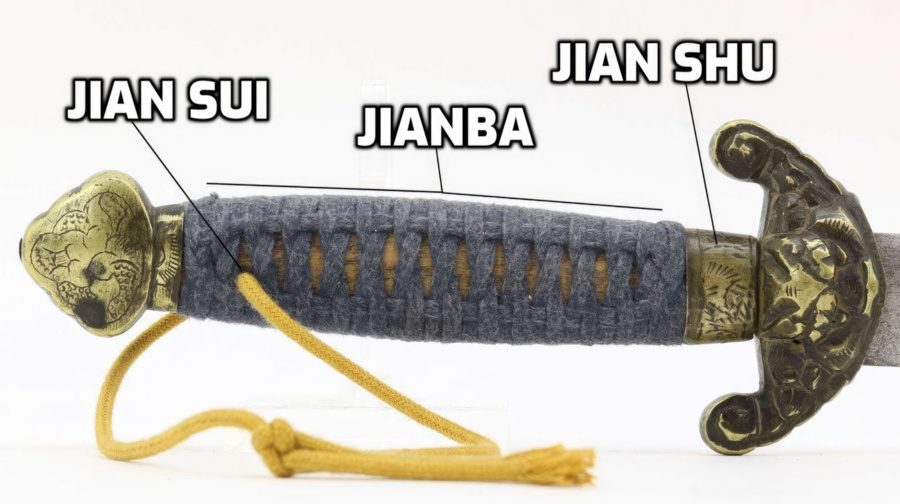
Said to be the “Gentleman of Weapons,” the Jian sword was the first prototype Chinese sword made. The earliest versions of its handles were straight and slightly expanded in the middle to improve grip. The guard was typically diamond-shaped, tapering toward the blade or handle, and the pommel was typically either a ring or, later, a round or garlic-shaped Chinese pommel.
Jian swords were efficient thrusting weapons when used with a shield because they were double-edged, or honed on both sides of the blade. Hence, most Jian handles are straight and one-handed, constructed from many essential components. Wood is the most popular choice for a Jian sword handle.
The Jian and the Dao share some of their handle parts. Here are the different Jian handle components.
Jian Sui
Jian Chinese swords often have a small opening or hole drilled through the lower half of the handle called a Jian Sui. This small hole aims to hold the Chinese sword tassel or lanyard through it. Sometimes, however, the lanyard can be added onto the Chinese handle sword wrap if it is present.
Jianba
The entire length and handle of a Jian sword are called the Jianba. Usually, they were made of wood throughout history and weren’t wrapped with a cord. A unique characteristic of it is the widening of the middle part so that a better and stronger one-handed grip can be possible.
Jian Shu
Like the Dao sword handles have a ferrule, so does the Jian sword, which has the same purpose as the Dao ferrule. Still, it can be highly ornamental with very rare and expensive materials added to it due to the Jian becoming a highly aristocratic and martial arts weapon in history.
One Handed Chinese Sword Handle
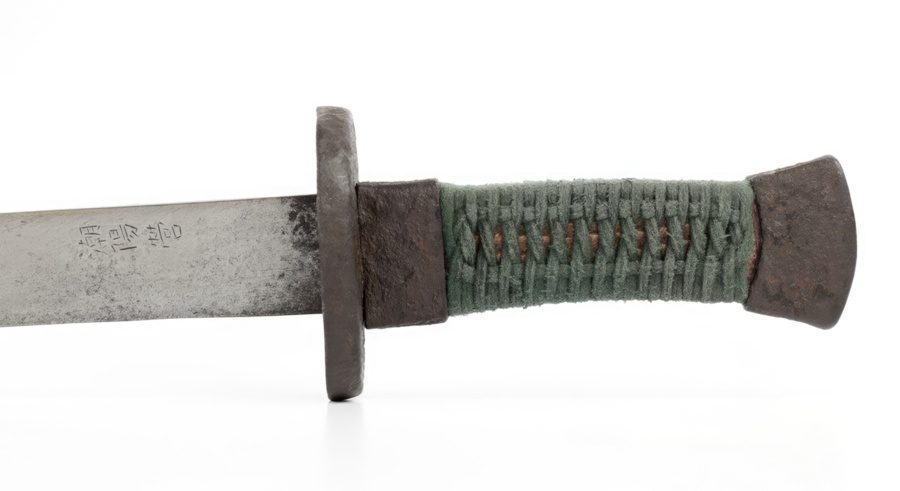
- Handle Length – 4 to 8 inches (10 to 20 cm)
- Sword Examples – Jian, Tang Dao, Niuweidao, Liuyedao, etc.
The first types of Chinese sword handles were one-handed ones. They were specifically made for use with only one hand and not even an inch larger giving them a wide range of abilities and attacking or defensive motions when used with or without a shield.
Two-Handed Chinese Sword Handle
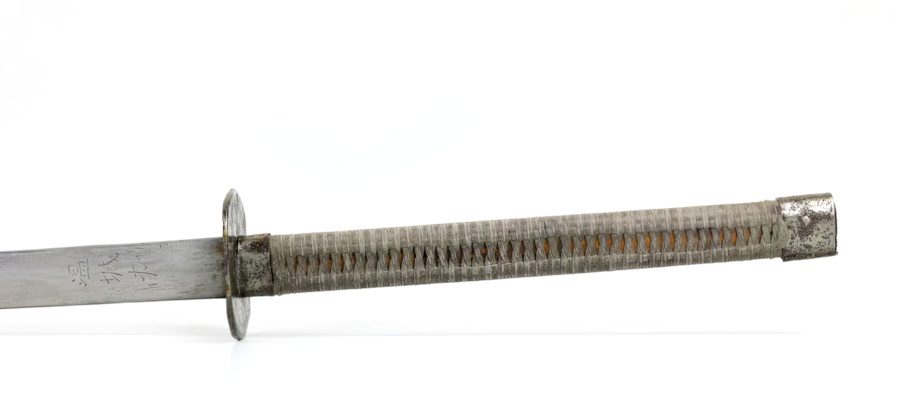
- Handle Length – 10 to 14 inches (25 to 35 cm)
- Sword Examples – Miao Dao, Chang Dao, Wo Dao, Zhanmao Dao, etc.
With the increase of Chinese metallurgy, mainly starting during the Han Dynasty, larger Chinese swords were created and used effectively with both hands. This led to an increase in the handle’s length, which offered much more powerful slashes that were very effective against cavalry, like the later Zhanmaodao.
Chinese Sword Handle Wrapping
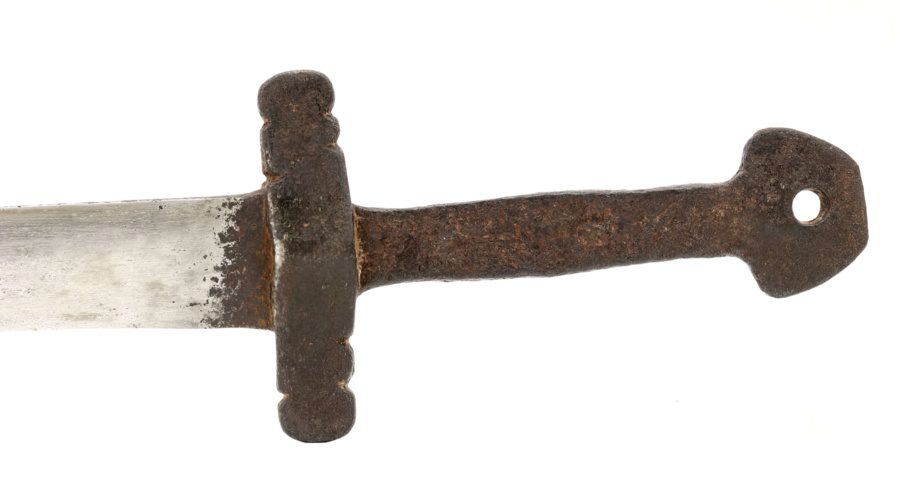
There are some Chinese swords where the blade extends a full-handle metal piece ending into a ring pommel. In handles like these, the Chinese sword handle wrapping is a must.
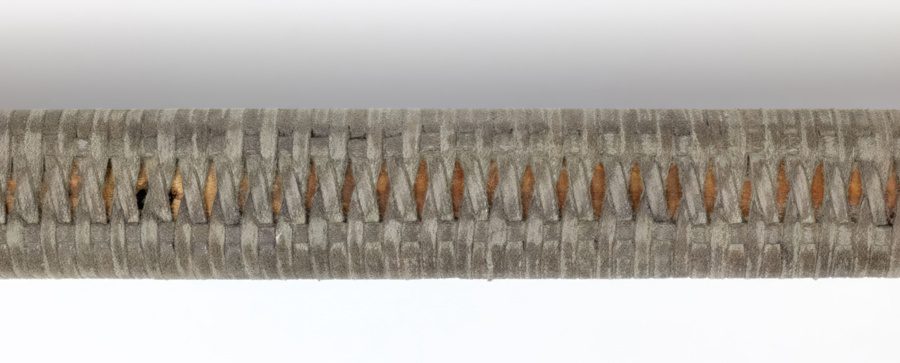
It is a procedure that has been evolving throughout the sword history of China, and even today, it needs much practice to master it fully. It cannot be said with certainty whether or not it provides a better overall grip because it comes down to personal preference, but it surely is aesthetically pleasing.
